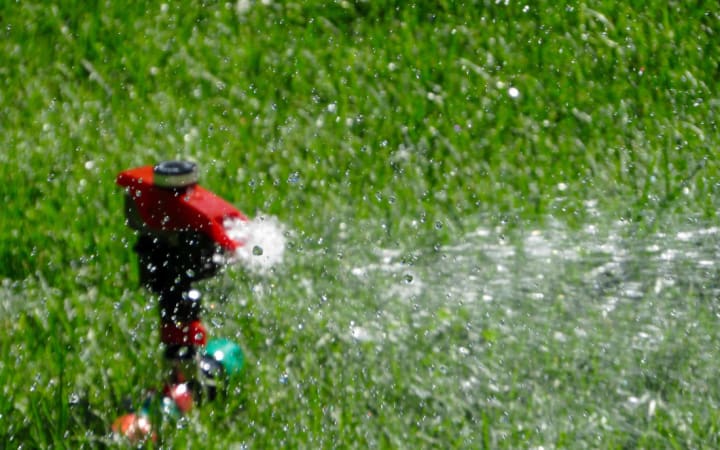Everything You Need to Know About Sodding
Are you thinking about sodding your lawn? Read on to learn more.

Sodding does wonders for a lawn that has seen better days. For instance, sodding a lawn that's dense, green, and immune to weeds and diseases replaces tired-looking, yellowish turf. It’s not as simple as taking a new sod and laying down on top of an old yard. Allow the current soil to prepare for the new sodding grass carpet.
Find out how much sod you need to order first. Don't worry; using basic math is shockingly easy to decide. Getting the total square footage of the sod you need is simple, take the length of your yard and multiply it by its width. It's time to put your lawn in shape now.
Here's what there's to know about sodding.

What is sod?
Basically, sodding is a grass that has been planted already. Sod is sold in parts kept together by roots or other materials, which are usually grass and soil. Sodding is also commonly referred to as turf grass golfers like this sort of lawn because it is lusher and grows more uniformly. Sometimes it is also longer than other grass types.
How does it work?
Prepare the soil.
Before sodding a yard, you should send the sample to a soil testing facility, such as a university extension service, a month before you decide to install sod to have a sample of your soil tested for any nutrient deficiencies. It can decide whether the soil is too acidic or too alkaline and requires some nutrients to provide the new sod with a good foundation.
With the help of a rototiller, shake off the top 6 to 8 inches of dirt. Spread out 2 centimeters of finished compost. To boost drainage, apply 2 to 3 inches of sand to the claylike surface till the changes are in. Then use a spreader to lay down the required starter fertilizer, based on your soil test results, and then lime if needed. Most folks forget this step when sodding a yard for the first time.
Apply the sod immediately.
Only after the ground has finished its preparation for the application of the sodding should the sodding be ordered. And as soon as the sodding roll arrives, the application should begin immediately. The more time the sod stays rolled up the more the heat from the natural microorganic processes will destroy the sod roll.
The sod is very sensitive to heat and it has a large chance of deterioration during the summer. During the colder times of fall and winter, the lifetime of the sod extends to 2-3 days. And it will not show any signs of yellowing or heat damage. If the sod can not be mounted right after delivery, it must be positioned to keep it cool in a shaded location. To keep it fresh until the moment of installation, gently spray the sod with water.
Start with a straight line.
Where should the installation of sodding grass begin? It is recommended that the sodding tiles must be placed on the longest straightest line on the field. Preferably, like the bricks of a building, we'll stick them together.
Enabling loose or careless seams at the edges is one of the greatest mistakes we see professionals make when sodding a yard. We decrease the risk of the weeds sprouting if all the edges are close.
Water immediately.
Often it is too late to wait to irrigate until the whole work is done. A few hours before the heat begins to strike, it is necessary to start irrigating because if we wait until the job is done, the sodding grass is most likely to overheat. To settle the soil and remain green and healthy, it requires plenty of water. It's better to drink in the morning. A lot of the water can evaporate as the temperature increases towards the afternoon.

Don’t forget to irrigate.
Irrigation is going to be the most significant element before the sod takes root. On the best-prepared ground, you can lay the sod, but if it's not watered, it's going to die. Remember, that most of the roots have been lost from harvesting the sod. The sod needs to grow new roots and to accomplish this it needs our assistance. Since muddy soil can produce an anaerobic atmosphere that will choke the roots, it needs to have damp but not muddy soil.
So after sodding a lawn how much water is needed, then? You've got to use common sense and closely follow the sod. Lift one side of the sod to see if it's damp on the grass. It shifts from a healthy green color to a dull gray when the sod is underwater pressure. After 7-10 days, the sod should need less water if the right conditions have been met.
Sodding a lawn is the quickest way to have an appealing yard. But your beautiful lawn could dry out and die without the proper maintenance and the necessary installation techniques. Contact Royal Sodding today for all of your sodding and lawn maintenance needs.
This article has been written by royalsodding.ca. Royal Sodding offers professional sod replacement and other softscaping services. Check their site for more information.
About the Creator
Jen Hensey
Call me Jen, a writer and blogger of LifeStyleConvo & UrbanHouses, who worked as a full-time content creator. A writer by day and reader by night.






Comments
There are no comments for this story
Be the first to respond and start the conversation.